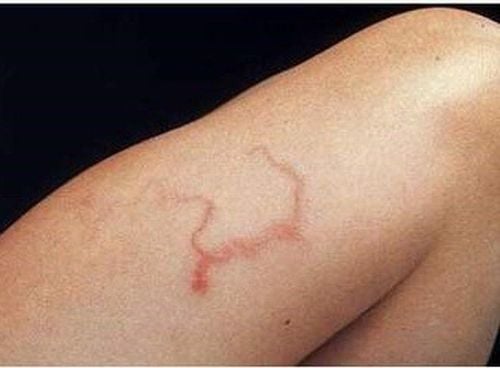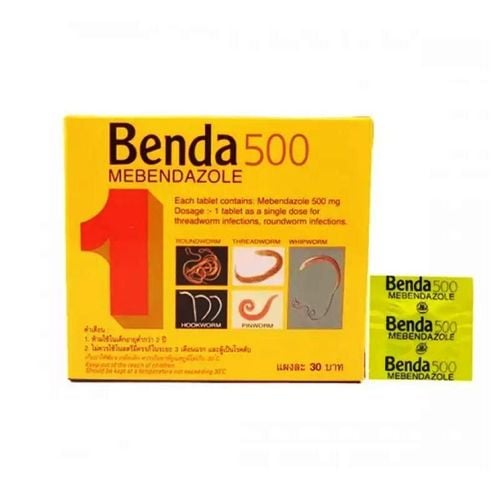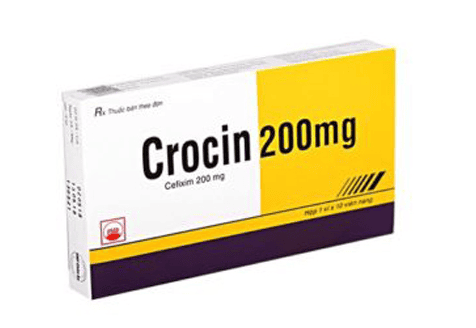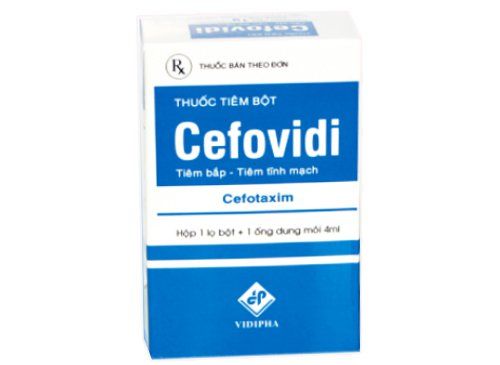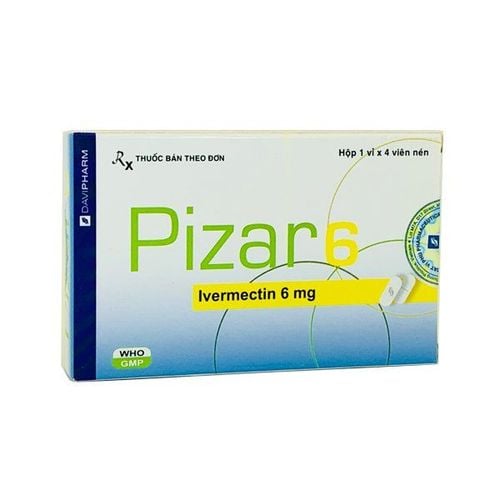This is an automatically translated article.
Didalbendazole is a medicine used to treat parasites in the intestines and other organs. Didalbendazole will work against parasitic worms in the body. However, when using Didalbendazole, it is necessary to pay attention to the usage as well as the side effects of the drug to avoid encountering.
1. What are the uses of Didalbendazole?
Didalbendazole is a drug belonging to the group of antiparasitic drugs, broad-spectrum anthelmintics. The drug is prepared in the form of film-coated tablets with the main ingredient Albendazole 400mg. Albendazol is a derivative of Benzimidazol carbamate, which has broad effects on intestinal worms such as hookworms, roundworms, pinworms, strongyloides, whipworms, helminths, migratory larvae under muscles and skin as well as on the skin. such as tapeworms, tissue fluke larvae (such as Echinococcus granulosus, E. multilocularis). Albendazol is effective on both adult and larval stages of intestinal worms, killing eggs of roundworms and whipworms.
Albendazole's mechanism of action in the body is similar to that of other Benzimidazoles. Didalbendazole inhibits the polymerization of tubules into cytoplasmic microtubules. These are necessary organelles for the normal functioning of the parasite's cells, helping them reproduce and develop.
Therefore, Didalbendazole is used in the treatment of the following cases:
Infections of intestinal parasites such as roundworms, pinworms, hookworms, hookworms, hairworms, strongyloides, melon seeds, and swine flu , beef tapeworm, liver fluke Opisthorchis viverrini and O. sinensis. Besides, Didalbendazole is also effective in killing migratory skin larvae. The drug is also effective against parasitic tapeworm larvae in the brain (causing brain damage such as neurocysticercosis). In addition, Didalbendazole is also the drug of choice for the treatment of inoperable cystic disease. But the long-term benefits of this treatment require more research. In summary, Didalbendazole will act on the larval and adult forms of most worms and some flukes, thereby destroying them. The drug will work by interfering with the glucose tolerance of helminths.
2. Dosage and how to use Didalbendazole
For Didalbendazole can be chewed, swallowed or crushed when used or mixed with food without fasting or cleansing.
Dosage for treatment of roundworms, pinworms, hookworms, whipworms:
Adults and children over 2 years old: Take a single dose of 400mg and can be treated again after 3 weeks. Children 2 years and older: 200mg as a single dose. May repeat treatment after 3 weeks. For larvae migrating under the skin:
Adults: Oral dose of 400mg x 1 time/day and taken within 3 days. Children: Take 5mg/kg/day for 3 days. Treatment of cysticercosis with dosage:
Adults: Take 800mg per day and drink within 28 days. Repeat treatment if necessary. Children 6 years and older: Take 10-15 mg/kg/day, orally for 28 days and repeat treatment if necessary as directed by your doctor. Children under 6 years: Dosage has not been well studied. Brain fluke larvae are treated with the following dosage:
Adults and children: Use the drug at a dose of 15mg/kg/day for 30 days. Repeat treatment after 3 weeks if necessary. For tapeworms, strongyloides:
Adults and children over 2 years old: Use the drug at a dose of 400mg orally once a day, orally for 3 days. Repeat treatment after 3 weeks if necessary. Children from 2 years old and younger: Oral 200mg x 1 time/day, orally within 3 days. The treatment can be repeated after 3 weeks if necessary
3. Didalbendazole side effects
When using Didalbendazole, you may experience unwanted effects including:
When treated for a short period of no more than 3 days, there may be some cases of gastrointestinal discomfort such as epigastric pain. , diarrhea and headache. In the treatment of cysticercosis or cysticercosis that causes brain damage (such as neurocysticercosis) where high doses are required and lasts for several days, common side effects will be more numerous and severe.
Usually the side effects when using Didalbendazole are not severe and can be reversed without treatment. Treatment must be stopped only when there is leukopenia (0.7%) or liver abnormalities (3.8% in cysticercosis).
The most common side effects:
Fever. Headache, dizziness, dizziness, increased intracranial pressure. Abnormal or impaired liver function, elevated liver enzymes. Abdominal pain, nausea, vomiting. Hair loss but recovery. Less common side effects include:
Systemic: Allergic reactions. Leukopenia . Skin allergy, urticaria. Acute kidney failure.
4. Precautions when using Didalbendazole
The interaction of the drug Didalbendazole with other drugs such as: Dexamethasone, Praziquantel can increase the level of metabolism of Albendazole in the blood and with Cimetidine cause an increase in the concentration of Albendazole sulfoxid in the bile, fluke fluid by about 2 times in humans. cyst infection when used concurrently.
The following situations should be used with caution when using Didalbendazole:
Patients with abnormal liver function because Didalbendazole is metabolised in the liver and a small number of people taking the drug have seen hepatotoxicity. Pregnant women: Should not be used unless directed by a doctor. Women who are breast-feeding. The article has provided information on what Didalbendazole is, dosage and precautions for use. Because Didalbendazole is a prescription drug, patients should not use it on their own, but need to contact a doctor or professional person directly to get a suitable prescription to ensure safety for health.




